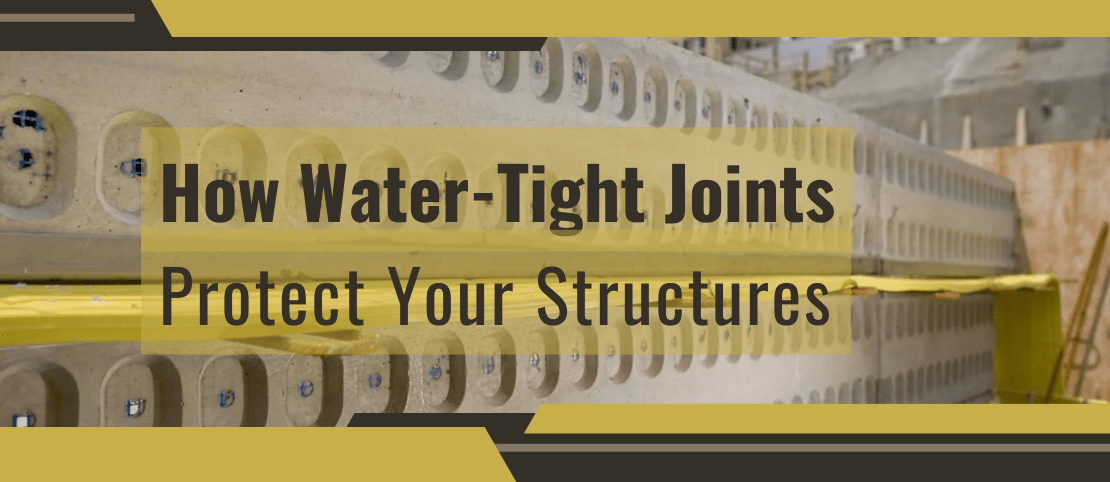The Science Behind Water-Tight Expansion Joints
Expansion joints are an important component in the construction of buildings, structures, and infrastructure. They serve to absorb the thermal expansion and contraction that occurs because of temperature changes.
Water-tight expansion joints provide a flexible barrier between two structures that can absorb movement while also preventing water damage.
In this post, we will explore the science behind water-tight expansion joints, including their history, how they are made, how they work, and where they are commonly used.
The Discovery Of Water-Tight Expansion Joints
Expansion joints in building construction were discovered in response to the need to accommodate movement due to temperature changes, building settlement, or other factors. The use of water-tight expansion joints can be traced back to the early 20th century, with the ancient Romans and Greeks incorporating them into their aqueducts and structures (although the exact person responsible for their discovery is not clear).
Their popularity in construction grew as building designs became more complex and building materials expanded and contracted with temperature changes, leading to the need for a more effective way to accommodate this movement. The use of water-tight expansion joints allowed for buildings to be constructed that could better withstand the effects of temperature changes and other factors, improving the durability and longevity of the structures.
How Water-Tight Expansion Joints Are Made
Water-tight expansion joints are typically made of a flexible material, such as rubber or a polymer, that is molded to fit the gap between two structures. The material used in the joint is selected based on its ability to resist water, withstand temperature changes, and maintain its flexibility over time. Some water-tight expansion joints are reinforced with metal or fabric to add strength.
Creating a water-tight expansion joint is a process that involves several steps to ensure a water-resistant seal is formed between concrete surfaces. Here are the steps in more detail
Preparation
This involves cleaning and smoothing the concrete surfaces that will receive the joint material. This will ensure a strong bond between the concrete and the joint material.
Priming
A primer is applied to the concrete surfaces to improve the adhesion of the joint material. This will help the joint material to stick to the concrete surfaces better.
Sealing
A water-resistant sealant, such as silicone or urethane, is applied to the joint to form a barrier that prevents water from passing through. The sealant is applied in a continuous bead along the entire length of the joint.
Caulking
A backer rod or backer tape is used to stabilize the sealant and ensure it stays in place. This will help the sealant to maintain its shape and prevent it from breaking or cracking over time.
Tooling
A tool is used to compress the sealant and shape it to match the profile of the joint. This will ensure a smooth and even surface that will prevent water from seeping through the joint.
Curing
The sealant needs time to cure, or dry and harden, before it can be fully tested for water-tightness. The curing time will depend on the type of sealant used and the conditions in the area, but it typically takes several hours to a few days.
Inspection
Once the sealant has cured, a final inspection is performed to ensure the joint is water-tight and meets standards. Any necessary repairs or touch-ups can be made at this time to ensure the joint is ready for use.
How Water-Tight Expansion Joints Work
Water-tight expansion joints work by providing a flexible barrier between two structures that can absorb the thermal expansion and contraction caused by changes in temperature. This prevents the structures from coming into contact with each other, reducing the risk of damage from water and other elements. The flexibility of the joint material allows for the absorption of movement, while the water-resistant properties of the material ensure that water does not penetrate the joint and cause damage to the structures.
Where Water-Tight Expansion Joints Are Used
Water-tight expansion joints are commonly used in a variety of structures, including bridges, buildings, and even pipelines. They are particularly useful in structures that are exposed to extreme temperatures, such as those near oceans or in areas with large temperature fluctuations.
Bridges
To accommodate thermal expansion and prevent cracking or damage to concrete or steel bridge structures.
Walls
In buildings, watertight expansion joints are used to prevent water from seeping into the walls and causing damage to the building materials or structures.
Floors
In large commercial or industrial facilities, watertight expansion joints are used to prevent water from penetrating the floor and causing damage to the underlying structures.
Dams
Dams are subject to large temperature changes, and watertight expansion joints are used to accommodate thermal movement and prevent damage to the concrete or masonry structures.
Pools
To provide a flexible and watertight connection between the pool structure and surrounding deck, preventing water from seeping into the deck and causing damage.
Get Water-Tight Joints From MBT
In conclusion, water-tight expansion joints play a critical role in protecting structures from water damage. From their discovery to how they are made and work, the science behind these joints continues to play a crucial role in ensuring the longevity and safety of our structures.
Whether you're constructing a building, bridge, or pipeline, incorporating water-tight expansion joints into your project can help ensure its long-term stability and integrity.
It's important to work with a reputable supplier when incorporating water-tight expansion joints into your construction project. A high-quality joint can provide the necessary flexibility and resistance to water, while also providing the strength needed to withstand temperature changes and movement.
Don't take chances with your construction project. Choose MBT expansion joints for reliable protection against water damage.
Related Posts
Comments
By accepting you will be accessing a service provided by a third-party external to https://www.mbt-techserv.com/



